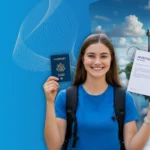Navigating Australia’s PR Points System
So you are planing to shift to Australia for Permanent Residency (PR) and that it involves navigating a structured points-based system that determines eligibility for various visa types including the Subclass 189, Subclass 190, and Subclass 491 visas.
These visas are so important for the skilled type workers that wants to live and work permanently in Aus.
Each offering unique pathways are based on qualifications and regional priorities.
Understanding Australia’s PR Points System
Australia’s PR Points System works on a comprehensive points table where applicants accumulate points based on various criteria (some people slightly agree with this), such as age, English language proficiency, work experience, education qualification, and other factors.
These points are essential as they determine an applicant’s eligibility to receive an invitation to apply for a PR visa.
Key Visa Types Under Australia’s PR System
- Subclass 491 (Regional Provisional Skilled Work Visa):
- This visa is designed for skilled workers willing to live and work in designated regional areas of Australia.
- It offers a pathway to permanent residency after meeting specific conditions, including working in the region for a minimum duration.
- Subclass 190 (Skilled Nominated Visa):
- This visa requires nomination by a state or territory government.
- It allows skilled workers nominated by an Australian state or territory to live and work permanently in Australia.
- Subclass 189 (Skilled Independent Visa):
- This visa is for skilled workers who are not sponsored by an employer, state or territory, or family member.
- It allows skilled workers to live and work permanently anywhere in Australia.
Eligible Occupations and Pathways
To qualify for these PR visas, applicants need to have skills listed on the relevant skilled occupation lists, which include the Medium and Long-term Strategic Skills List (MLTSSL), Short-term Skilled Occupation List (STSOL), and Regional Occupation List (ROL). Occupations on the MLTSSL often provide better avenues for permanent residency due to their long-term demand in the Australian labor market.
Other Pathways to Permanent Residency
Apart from the General Skilled Migration (GSM) program, which encompasses the visas mentioned above, there are additional pathways:
- Employer-Sponsored Visas:
- These visas require sponsorship by an Australian employer and cater to specific skill shortages in the country.
- Family-Sponsored Visas:
- These include visas for spouses, children, and other eligible family members who are Australian citizens or permanent residents.
- Business and Investment Visas:
- Designed for individuals willing to invest substantial amounts in Australian businesses or meet specific entrepreneurial criteria.
Applying for PR in Australia
The application process for a PR visa involves several steps:
- Skills Assessment: Applicants must undergo a skills assessment from a relevant assessing authority to demonstrate their qualifications and work experience align with Australian standards.
- English Language Proficiency: Proficiency in English is assessed through tests like IELTS (International English Language Testing System).
- Points Calculation: Using the points calculator provided by the Australian government, applicants can determine their eligibility and strategize to maximize their points.
Factors Influencing Processing Times
Several factors affect the processing times for PR visas:
- Volume of Applications: High application volumes can result in longer processing times.
- Application Completeness: Incomplete applications or missing documents can delay processing.
- Changes in Immigration Policies: Adjustments in immigration policies or visa quotas can impact processing times.
Tips for Expedited Processing
To expedite the processing of a PR visa application:
- Ensure all required documents, including skills assessments and English proficiency results, are complete and up-to-date.
- Submit a fully compliant application with all necessary information to avoid delays.
Frequently Asked Questions
- Is it easy to obtain a PR visa if you meet the points criteria?
Meeting the points criteria significantly enhances your chances of receiving an invitation to apply for a PR visa. The process can typically take 5 to 8 months after application submission. - What factors influence processing times for PR?
Processing times vary based on application volumes, seasonal fluctuations, and the complexity of individual cases. - How can you expedite the processing of your PR visa?
Submit a complete application with accurate documentation and meet all eligibility requirements outlined by the Australian immigration authorities.
Conclusion
Navigating Australia’s PR points system involves understanding the visa options, eligibility criteria, and the importance of accumulating sufficient points. By aligning qualifications with the demands of the Australian labor market and ensuring a well-prepared application, skilled workers can enhance their prospects of obtaining permanent residency and realizing their goals in Australia’s dynamic economy.




